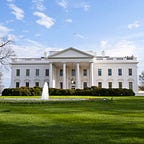Here’s Why You Should Care About Alternative Fuel Corridors
Today, we announced a set of new actions to accelerate the deployment of electric vehicles and charging infrastructure. In the past eight years, the numbers of electric vehicle models has increased from just one to more than 20. Battery costs have decreased 70 percent. We’ve increased the number of electric vehicle charge stations from less than 500 to more than 16,000 — that’s a 40-fold increase.
Today’s announcement builds on that progress. Here’s why that’s cool:
First things first: What’s “a fuel corridor?”
An alternative fuel corridor is designated when enough alternative fueling options are available frequently enough along any given stretch of road or highway to allow a non-gasoline-fueled car to drive its length without needing to detour to recharge or refuel.
For the first time ever, you’ll soon be able to take an electric vehicle on a coast-to-coast road trip.
How? The United State Department of Transportation (DOT) is establishing 48 national electric vehicle charging corridors on our highways. These newly designated electric vehicle routes cover nearly 25,000 miles —which means coast-to-coast zero-emission mobility on our nation’s highways.
This will be the basis for a national network of “alternative fuel” corridors spanning 35 states plus the District of Columbia.
It’s a whole new frontier for that iconic American pastime: The road trip.
Drivers can expect either existing or planned charging stations within every 50 miles.
To make it easier for drivers to identify and locate charging stations, states designated as “sign-ready” are authorized to use signs developed by FHWA that identify electric vehicle charging stations and other alternative fuels along the highways similar to existing signage that alerts drivers to gas stations, food, and lodging.
Big organizations are helping make this happen.
BMW, General Electric, General Motors, and Nissan are just a few of the big names who are committing to help accelerate the deployment of electric vehicle charging infrastructures. These initial and future corridors will serve as a basis for a national network of electric vehicle charging infrastructure. It’s the start of something huge!
States and cities — maybe yours! — are also getting involved in the commitment to zero-emission vehicles.
Building on the Administration’s policy to reduce greenhouse gas emissions (GHG) from Federal Fleets by 30 percent by 2025, today, we are announcing 24 state and local governments have joined the federal government to electrify our fleets. These new commitments will account for over 2,500 new electric vehicles in 2017 alone, and help pave a path for a sustained level of purchases into the future. Find the full list of participating cities and states here.
